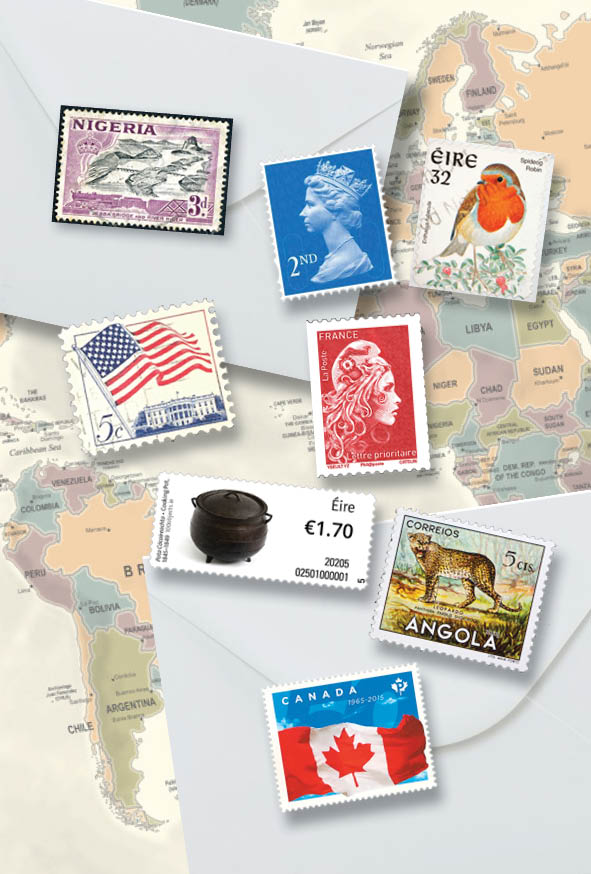Stamp Collecting
 Is it still worth collecting stamps for the missions in a digital world? Yes, definitely.
Is it still worth collecting stamps for the missions in a digital world? Yes, definitely.
Stamp collecting is among the most popular pastimes in the world. It has been called “the hobby of kings”. As we are curious by nature, it is easy to understand why many collectors take an interest in stamps of other countries, or to be more precise, the stamps of certain other countries. The cheapest and most affordable way for these collectors to acquire stamps, from selected countries, is to buy stamps from that particular country.
On average, a parcel of stamps contains about 1200 stamps, with many duplicates. These parcels are not sorted or picked by the dealers, as labour costs are prohibitive. This fact benefits the collector as he can do his/her own sorting, falling upon stamps that can be added to his collection, an interesting postmark and on the rare occasion, an exciting error! Duplicates can be swopped with other collectors or with stamp clubs so there is very little wastage. To collectors, most of the excitement is in the search and the sense of discovery, stumbling upon a stamp not encountered before.
It is obvious that the Dealer must have large quantities from any one country to weigh out small parcels for sale. The question is where can he get such quantities in the first place? The answer is mainly from Religious Orders and certain Charitable Organisations who receive small to medium quantities of stamps from many well-wishers. Any single offering may be a “widow’s mite”, but added together, these offerings gain considerable weight. Dealers buy from these sources and apart from the weight the factor that determines the price is the quality of the stamps.
If you have been collecting stamps for MMM, please continue the good work; if you have not, would you please consider doing so now. The following simple, but golden rules go to help maximise your contribution.
GOLDEN RULES
1. Never try to peel a stamp from an envelope. You will damage the stamp, making it useless.
2. Clip the stamp and surrounding piece of paper from envelopes, etc. Leave about ¼ inch of envelope paper clear around the stamp. This is to ensure the stamp is not damaged.
3. If the envelope has a neat circular postmark, try to include all of the postmark in the clipped piece. Many collectors are as interested in postmarks as they are in actual stamps.
Please send your stamps to:
Sr. Breeda Ryan, MMM
Stamp Department
Beechgrove
Drogheda, Co. Louth A92 XKX0
